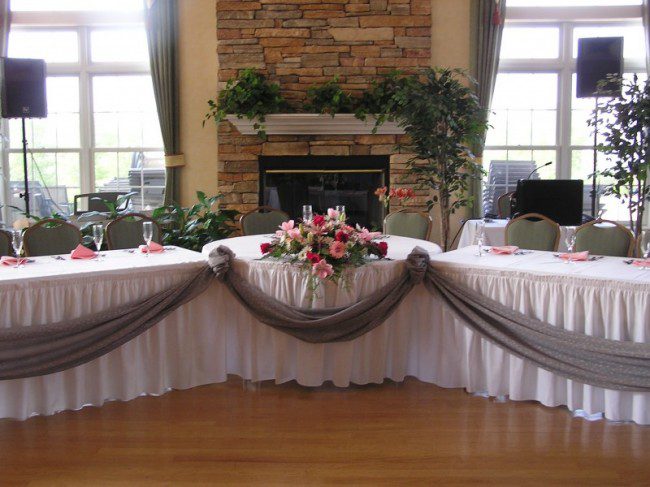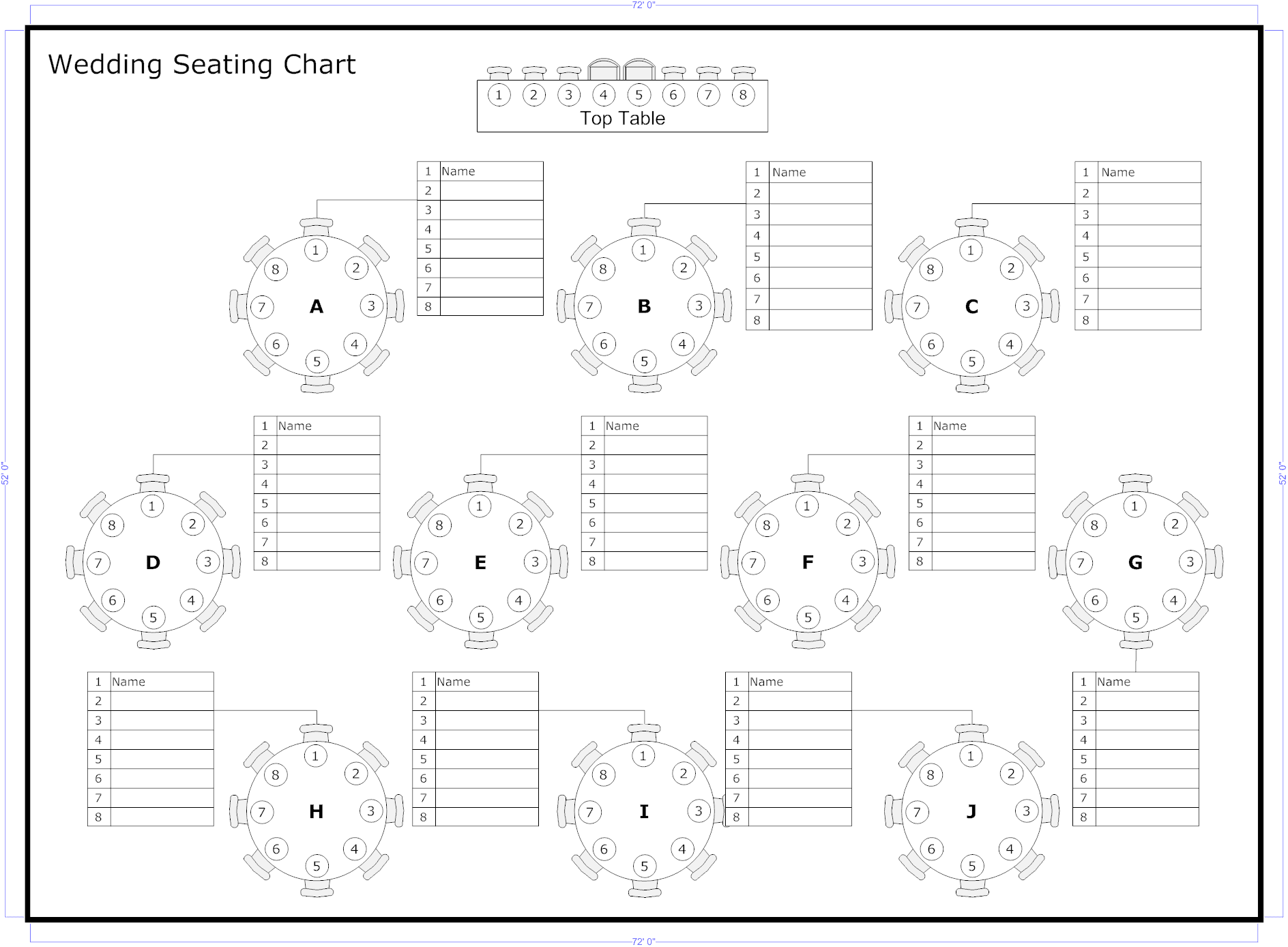This blog is brought to you by your friends at BrideBox Wedding Albums– the highest quality DIY Wedding Albums available direct to brides. Your precious wedding memories deserve to be shared for years to come, our incredible quality albums do just that. Join our mailing list today to get 20% off your future album! We hope you enjoy this post!
Whether you plan to have 50 guests or 200 guests, a seating plan for your reception is an absolute must. It will help your guests get from the ceremony to their tables as quickly and as smoothly as possible. We know that tackling something like a seating chart for your wedding may seem scary, so we’ve put together this guide to help you create the perfect seating plan for your reception. Take a deep breath – we’re here to help!
1. Seating options
Depending on how many guests you have and how big your venue space is, you’ll need to decide whether round tables or long, rectangular tables are more appropriate. Both types of tables can comfortably fit six to eight guests per table. However, rectangular tables are better if space is an issue while round tables are better for conversation. If you’re having trouble deciding between the two, have a combination of both!
Photo Credit: Caterers Warehouse
2. Assigned seats vs. assigned tables
Deciding who should sit with whom can be tricky, so simply assigning tables to each guest rather than assigning specific seats could be a better option for you if you have a lot of guests. The only exception is if you plan to have a multicourse plated meal with multiple selections for each course, in which case having assigned seats will expedite the serving process. If you are only assigning tables, you will need escort cards to help guests find their way to their tables. If you are assigning seats as well, you will need both escort cards and place cards at each seat.
Photo Credit: Etsy
3. Who sits where?
This is definitely the toughest part of creating a seating chart. You want to have a healthy mix of friends and family members who are familiar and who don’t know one another at each table, but you want to avoid any potential awkwardness by, for example, seating your friend who parties like he’s still in college next to your extremely conservative uncle.
Let’s start with the bridal table. Of course you and your partner will sit next to each other and the bridal party, including the maid of honor and her date, all bridesmaids and their dates and all groomsmen and their dates, can all be seated at the head table as well. You will decide what works best for you – if you have a smaller wedding, seating the whole bridal party and their spouses at the head table may work out. If you have a larger wedding, only including the maid of honor and best man at the head table may be a better option. You can also have the maid of honor, best man, bridesmaids and groomsmen at your head table but seat their plus ones at a different table. If you choose to go this route, alternate boy/girl/boy/girl until everyone is accounted for. Or, simply have you and your partner as the only ones seated at the head table.
Photo Credit: Wedding and Party Network
The table of honor is typically situated near the bridal table. This table is where the bride and groom’s parents, the officiant and sometimes grandparents are seated. If any of the parents are divorced, be sure to split them into different tables as needed.
The remaining guests are a mix of family members and friends from all stages of your lives. Make sure you double check with your parents to see if any family members hold grudges against one another and should be seated far apart. Your high school friends will likely want to be seated with each other, as will your college friends. If you need to split up groups for any reason, try to split the groups evenly so that no one is left out.
4. Sketch it out
A good way of visualizing how your seating plan will work is by sketching it out. Get the measurements of your reception venue and sketch out potential table arrangements. Make sure you draw things to scale so you can best view how it will look in real life. Be sure to account for room for guests and servers to move around as well as the dance floor. This is also a good way to see if you are accidentally seating controversial people too close to one another. You may also consider seating younger guests closer to the dance floor and speakers and seating older guests on the perimeter away from the loud music. Map it out and rearrange names until you feel comfortable with everyone’s seats.
Photo Credit: Smart Draw
5. Prepare your guests and reception
Before finalizing the seating chart, you may want to ask a close friend and a close family member to take a look at it and offer their opinions. You may have overlooked something that a second pair of eyes will catch. When you’ve gotten a second or third approval on your chart, it’s time to start preparing the escort cards and table settings. You’ll want to have the master seating chart displayed prominently at a convenient location at your reception so that guests can easily see it without crowding the area. If you are having a larger wedding, consider having two master seating plans on display to avoid crowding. Make sure your tables are in an easy-to-follow order so that guests can quickly find their tables. Congratulations – you’ve successfully created a wedding reception seating plan!
Photo Credit: Katherine Elise Events









